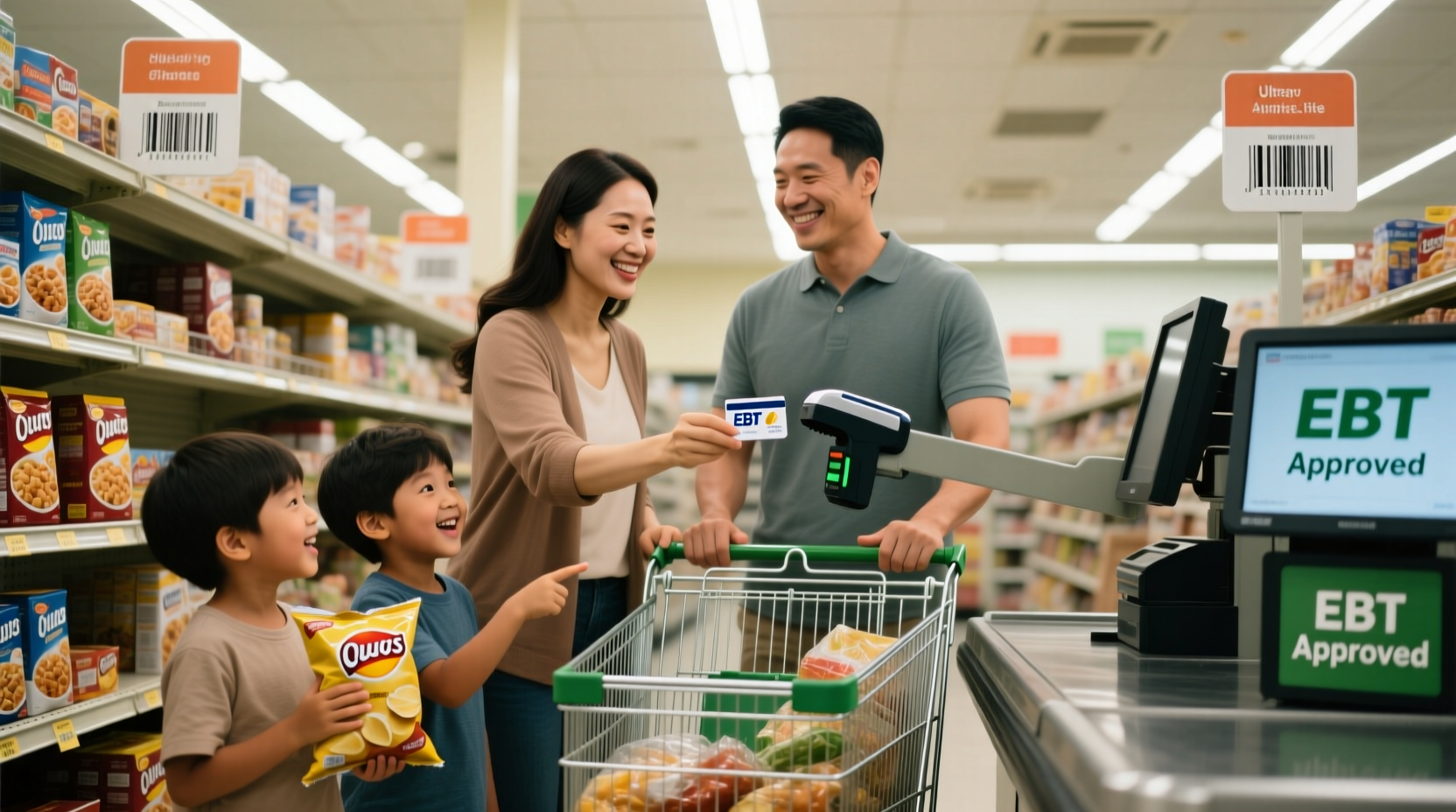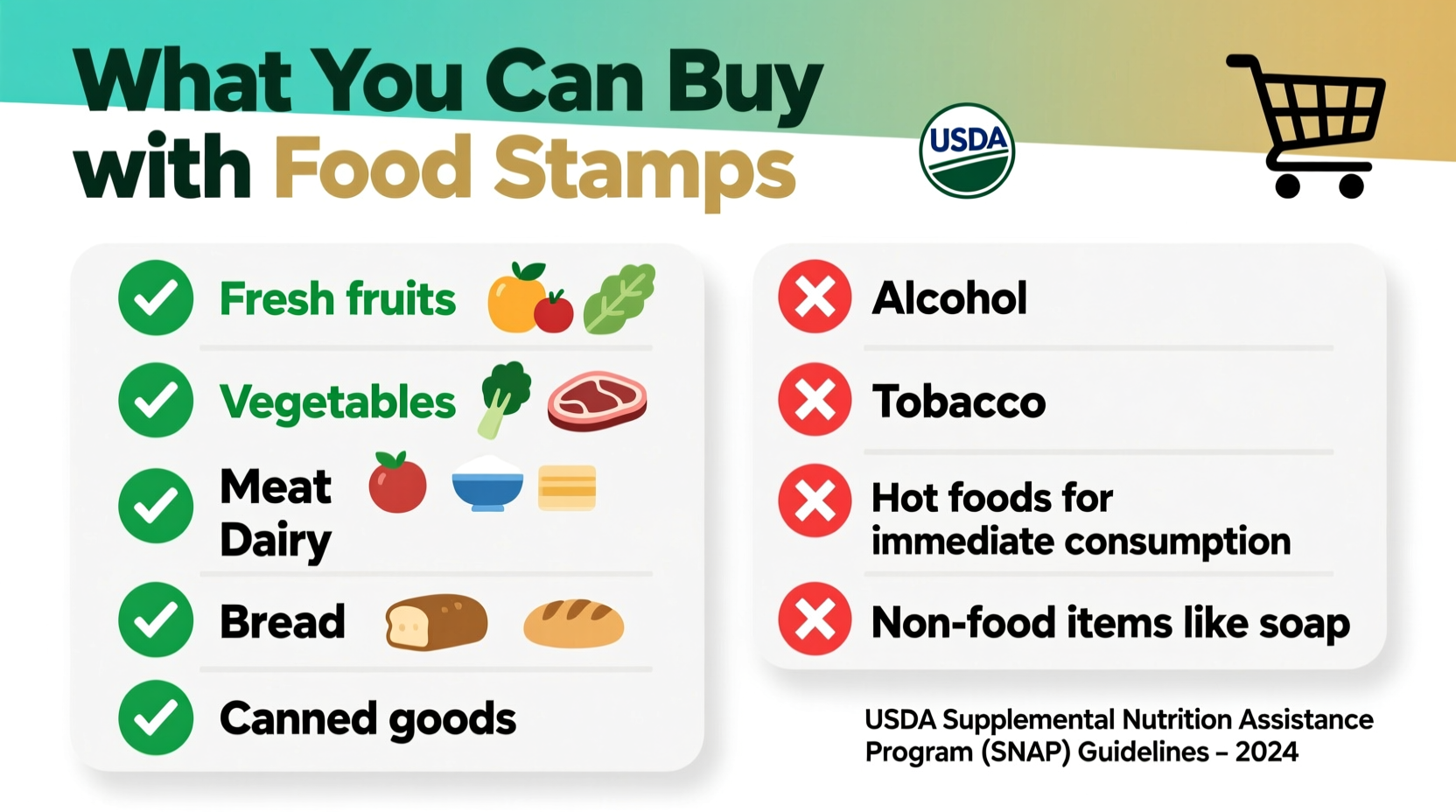SNAP benefits (food stamps) can be used to purchase groceries like fruits, vegetables, meat, dairy, bread, and seeds for growing food. You cannot buy alcohol, tobacco, vitamins, medicines, or hot prepared foods with SNAP. The USDA sets these rules to ensure benefits support nutritional needs while preventing misuse of public funds.
Understanding exactly what you can buy with food stamps is crucial for maximizing your SNAP benefits while staying compliant with program rules. This guide provides the most current, authoritative information directly from USDA guidelines so you can shop with confidence and make the most of your benefits.
SNAP Eligibility Basics You Need to Know
The Supplemental Nutrition Assistance Program (SNAP), commonly called food stamps, helps low-income households afford nutritious food. Administered by the USDA Food and Nutrition Service, SNAP has specific rules about eligible purchases designed to promote food security while maintaining program integrity.
Each month, SNAP benefits load onto an Electronic Benefit Transfer (EBT) card that works like a debit card at authorized retailers. Understanding what qualifies as an eligible purchase prevents checkout frustrations and ensures your benefits last throughout the month.
Complete List of SNAP-Eligible Food Items
SNAP benefits cover most food items intended for home preparation and consumption. The USDA categorizes eligible purchases as follows:
- Produce: All fresh, frozen, and canned fruits and vegetables
- Proteins: Meat, poultry, fish (fresh, frozen, or canned)
- Dairy: Milk, cheese, yogurt, eggs
- Grains: Bread, cereal, rice, pasta, flour
- Snacks: Chips, crackers, cookies (as long as not hot prepared)
- Beverages: Juice, soda, coffee, tea (non-alcoholic)
- Seeds and plants that produce food for household consumption
| Eligible Items | Ineligible Items |
|---|---|
| Fresh fruits and vegetables | Alcoholic beverages |
| Meat, poultry, fish | Tobacco products |
| Dairy products and eggs | Vitamins and supplements |
| Bread and cereal | Medicines and prescriptions |
| Snack foods | Hot foods ready to eat |
| Seeds and plants for gardening | Non-food items (soap, paper products) |
Understanding Special Purchase Situations
Certain purchase scenarios have specific rules that differ from standard SNAP guidelines:
Online Grocery Shopping
Since 2019, USDA has expanded online SNAP purchasing to major retailers including Amazon, Walmart, and regional grocery chains. You can use SNAP benefits for eligible food items through these platforms, but delivery fees and non-food items must be paid with another payment method.
Restaurant Meals Program
Some states operate Restaurant Meals Programs that allow certain SNAP recipients (elderly, homeless, or disabled individuals) to purchase hot, prepared meals at participating restaurants. This exception applies only in specific states and for qualifying populations.
Grocery Delivery Services
When using services like Instacart or Shipt, SNAP covers eligible food items but not delivery fees, service fees, or tips. You'll need an alternate payment method for these additional costs.
Recent Changes to SNAP Eligibility Rules
SNAP regulations evolve to address changing needs. Key updates include:
- 2020-2023: Temporary expansion of online purchasing options during the pandemic
- 2021: USDA approved additional states for Restaurant Meals Programs
- 2022: Permanent authorization of online SNAP purchases at more retailers
- 2023: Updated Thrifty Food Plan calculations affecting benefit amounts
Practical Tips for Maximizing Your SNAP Benefits
Smart shopping strategies help your benefits stretch further while maintaining nutritional quality:
- Plan meals weekly based on sales and seasonal produce to maximize value
- Buy store brands which often cost 20-30% less than name brands for identical products
- Use the "per unit" price on shelf tags to compare true costs between package sizes
- Stock up on staples like rice, beans, and pasta when on sale for long-term savings
- Grow your own produce using SNAP-eligible seeds and plants for ongoing savings

Common Misconceptions About SNAP Purchases
Several myths persist about SNAP usage that cause unnecessary confusion:
- Myth: SNAP benefits can only be used for "basic" or "staple" foods
Fact: You can purchase any eligible food item, including convenience foods and treats, as long as they meet program guidelines - Myth: Organic foods cannot be purchased with SNAP
Fact: Organic versions of eligible foods qualify for SNAP benefits - Myth: SNAP recipients get special discounts on food
Fact: SNAP functions as payment for eligible items at regular prices; no additional discounts apply
Where to Get Official SNAP Information
For the most current, authoritative information about SNAP eligibility:
- Visit the USDA Food and Nutrition Service SNAP page
- Check your state's SNAP agency website for local program variations
- Call the USDA National Hunger Hotline at 1-866-3-HUNGRY (1-866-348-6479)
Remember that SNAP rules remain consistent nationwide, though some states operate additional programs with different eligibility criteria. Always verify information through official government sources rather than third-party websites that may provide outdated or inaccurate guidance.











 浙公网安备
33010002000092号
浙公网安备
33010002000092号 浙B2-20120091-4
浙B2-20120091-4